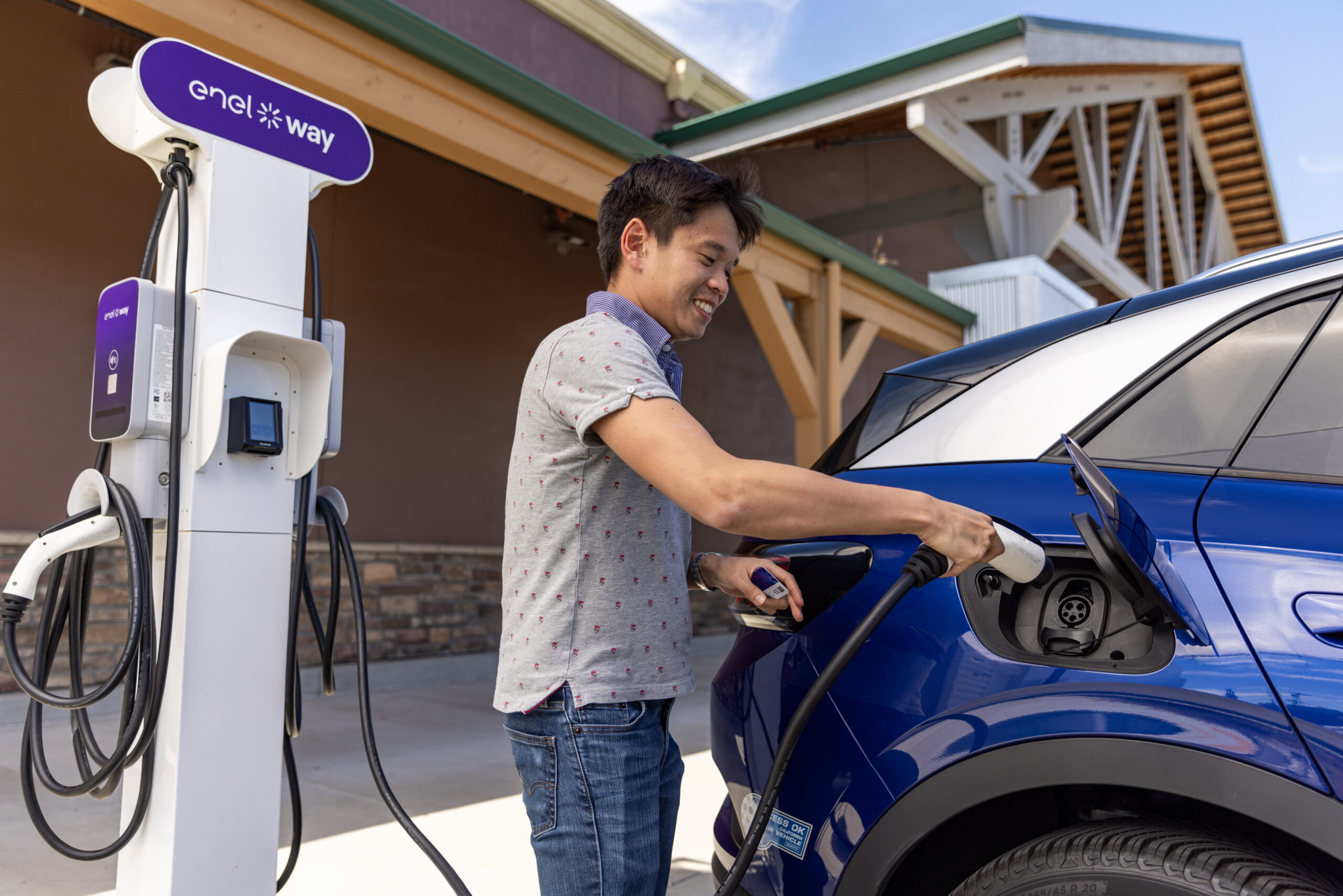
The future is bright for electric vehicles (EVs), with battery technology improving at a rapid pace. In the past decade, groundbreaking research and technological improvements have been responsible for battery prices falling from $1,100 per kilowatt hour (kWh) to $139 per kWh, improving the driving range and reducing the cost of EVs. This bodes well for EVs, foretelling a future where every car can run on electricity.

New EV Battery Technology:
It’s an exciting time for the EV battery industry; Here’s the current landscape and what we expect to see for battery technology.
1. Advancements in battery chemistry
Lithium-ion (Li-ion) battery chemistry changes are resulting in more efficient EVs with the transition away from toxic metals like Nickel Manganese Cobalt (NMC) to Lithium Iron Phosphate (LFP). Tesla, Rivian and Ford standard range models have already transitioned from NMC batteries to LFP packs while manufacturers like Hyundai, Nissan and Toyota have announced they are developing cheaper LFP options to reduce EV prices.
Solid-state electrolyte research promises advantages over liquid electrolytes including higher energy density, lighter construction, quicker charging, extended range, and longer lifecycles. Numerous strides have been made this past year, with researchers creating solid-state batteries that charge in minutes and can hold their charge for over 6,000 cycles, utilizing a variety of inexpensive metals and less lithium. Although solid state battery technology has experienced engineering and production challenges, they’re set for even more strides this year.
Lastly, development in Sodium-ion (Na-ion) batteries could prove optimal for shorter-range EVs and plug-in hybrid electric vehicles (PHEVs) by replacing lithium for far cheaper sodium. Na-ion batteries also perform better in low temperatures, provide quick charging and durability with longer lifecycles. While currently a China exclusive, new cathode innovations for Na-ion batteries may reach Western markets in the near-term.
2. Cost Improvements and Cheaper EVs
The transition away from cobalt and manganese is helping reduce EV battery costs as manufacturers turn to cheaper alternatives like iron, phosphate and sodium. Due to lower material costs and cheaper mining, EV batteries may reduce in cost by as much as 50% by the end of 2024.
Similarly, research firm Gartner expects production of EVs to be cheaper than gas powered vehicles by 2027 because of improvements to battery costs. We could see EVs below the $30,000 threshold in 2025 onward with the rumored Tesla Model 2 and upcoming Chevy Bolt.
3. Assembly and Manufacturing Changes
As of 2024, 60% of an EV battery must be assembled and manufactured in the US, and 50% of the critical minerals must be extracted or processed in the US to qualify for the EV tax credit and manufacturer incentives. As a result of the Inflation Reduction Act policy changes, many automakers have either built, started or planned construction on battery manufacturing plants in the US. Part of this increase in production is possible by using standardized cells and modules that can be easily scaled. For example, both Rivian and Tesla utilize cylindrical cells similar to AA or AAA batteries found in common household electronics. While batteries continue to increase in energy density, such as in Rivian’s 4695 cells entering production in 2026, they’re easy to manufacture as they incorporate a standardized package at a reduced cost.
4. New Applications:
Drivers are finding new ways to use EV batteries, including vehicle-to-everything (V2X) technology where an EV’s stored electricity is used to power the grid (vehicle-to-grid, V2G), homes (vehicle-to-home, V2H), and appliances (vehicle-to-load, V2L).
We expect more electric vehicles and chargers to be manufactured with V2X capabilities as local utilities institute programs that make the capability possible. By utilizing our EVs to support the grid and their home, EV drivers can improve grid resiliency, reduce their increasing power bills, and even power their home during outages and peak demand times.
What’s Next for EV Battery Technology?
EV battery technology is improving at an exciting pace. Researchers at McKinsey & Company predict the entire Li-ion battery chain, from mining through recycling, to grow more than 30% annually through 2030 and reach a value over $400 billion. Federal funding will continue to increase domestic battery manufacturing and sourcing efforts following the US administration’s $3.5 billion of funding announced in November 2023. Most importantly, batteries will further improve in cost and range, making EVs more accessible to consumers.
